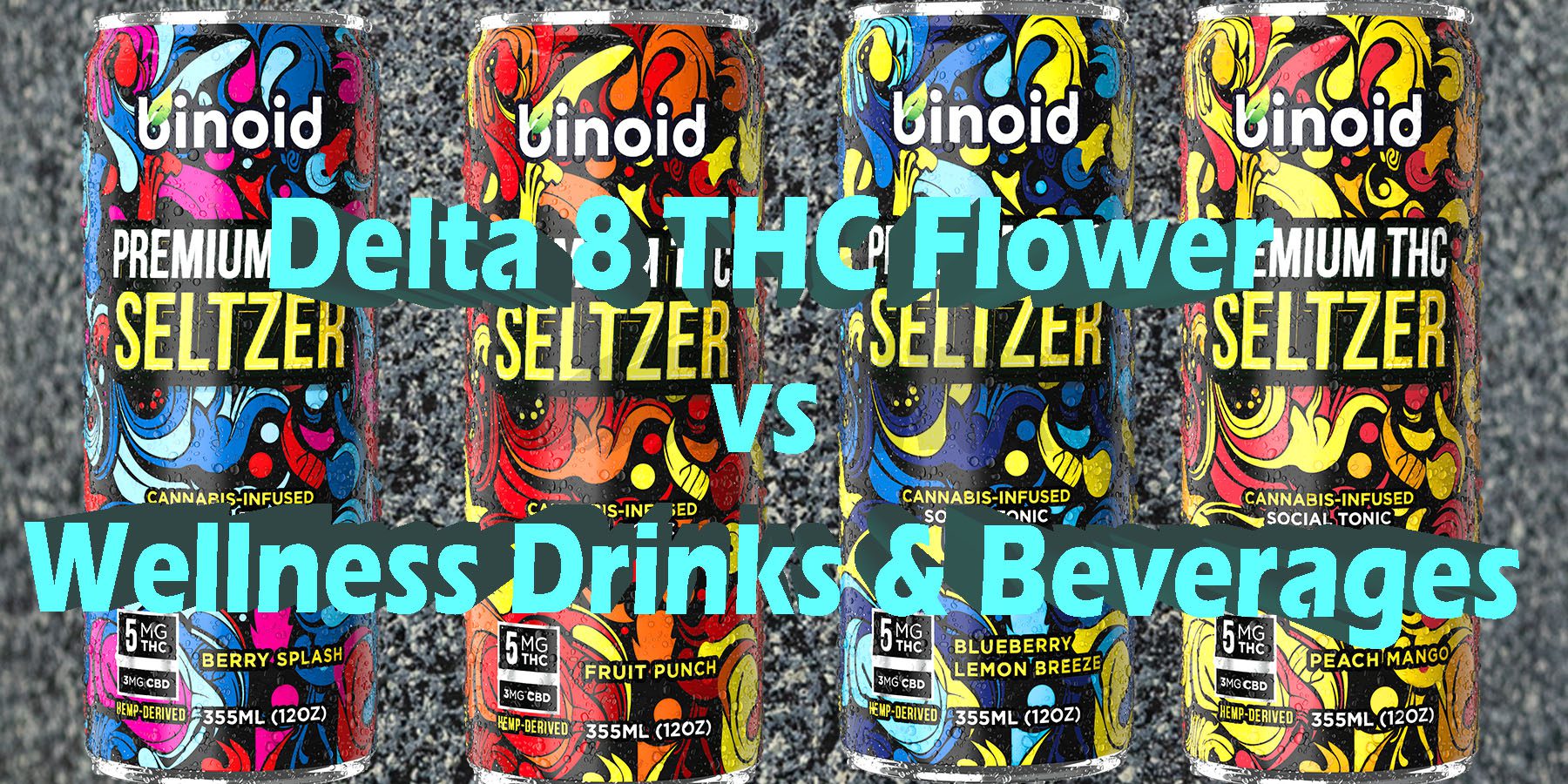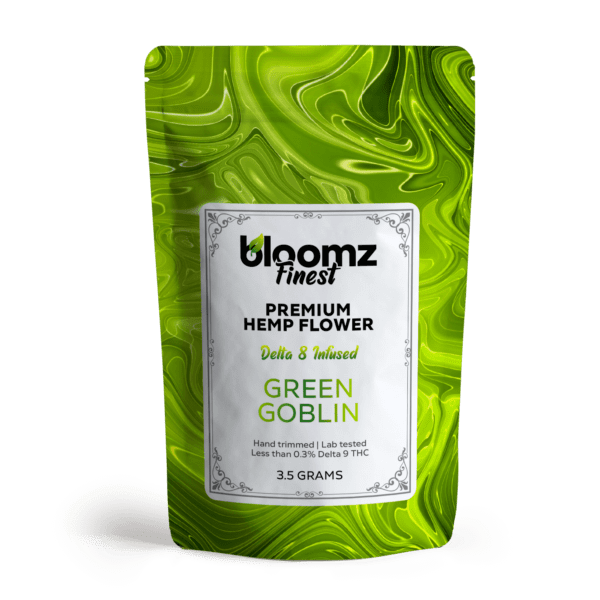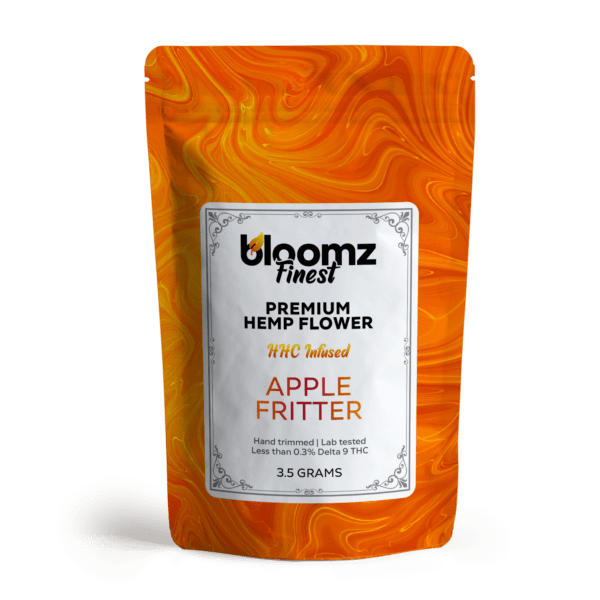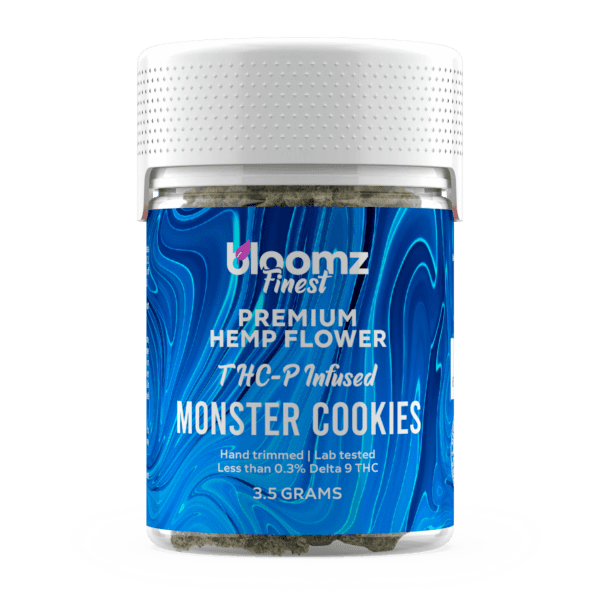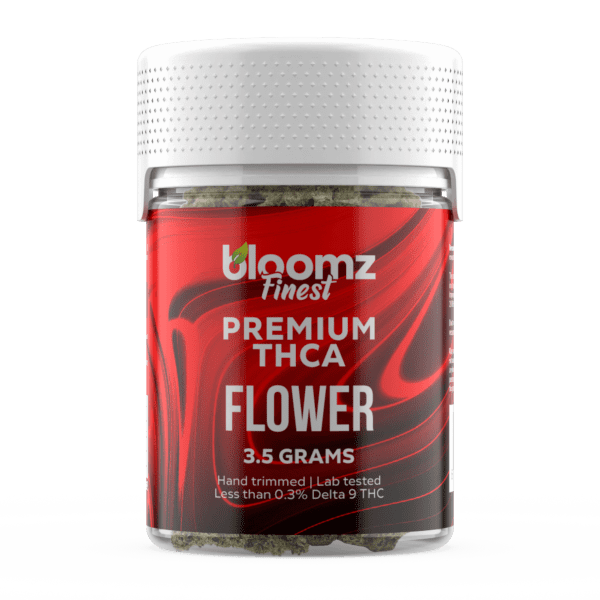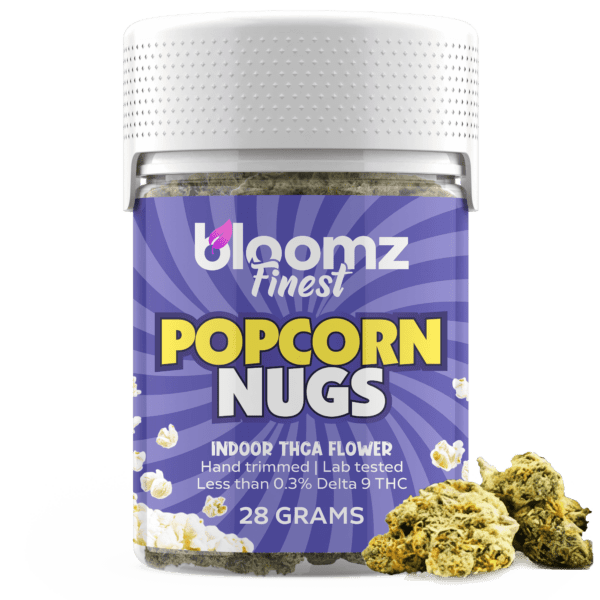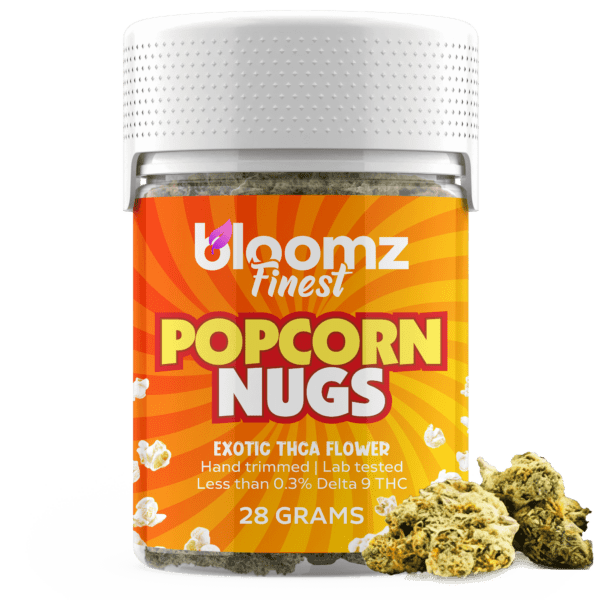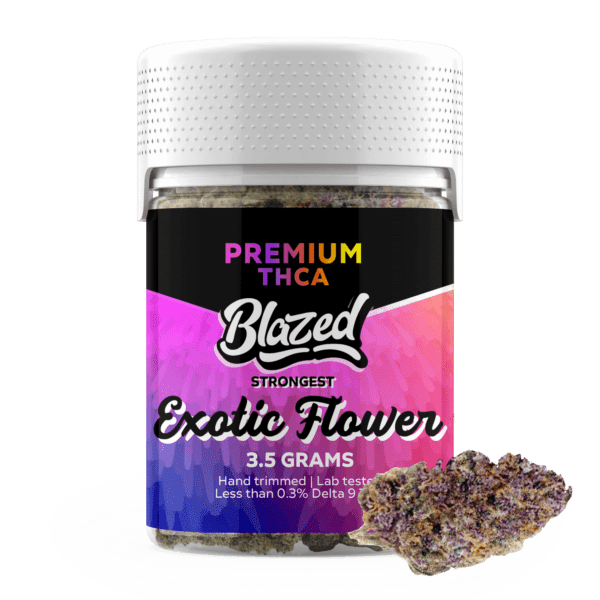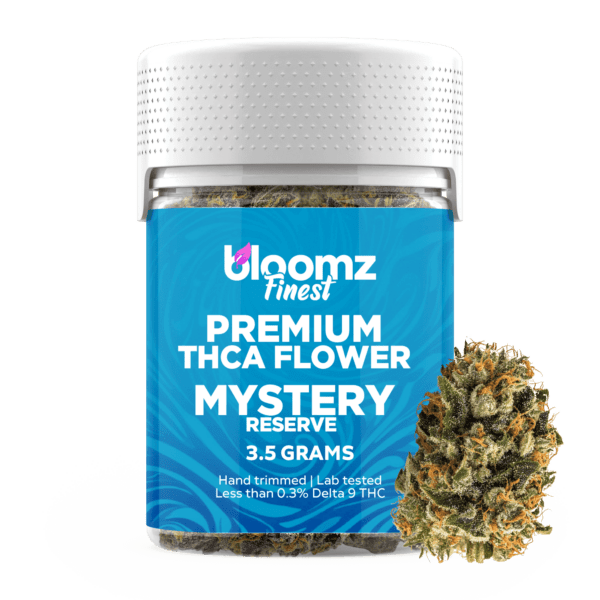In the ever-evolving landscape of modern wellness, the choices we are presented with often mirror a fundamental contrast in the elements themselves. It is a decision between the tangible, earthy nature of a solid and the fluid, flowing essence of a liquid. This very dynamic is at the heart of the comparison between the aromatic, tactile experience of Delta 8 THC Flower and the cool, refreshing convenience of a pre-packaged wellness beverage. One path invites you to engage with a product that is grounded and solid, transformed through the element of air into a fragrant cloud of immediate sensation.
The other path beckons you to embrace the element of water, to sip and savor an experience that is fluid, hydrating, and flows seamlessly into the currents of social life. To navigate this choice is to decide on the very state of your experience, selecting the form that best aligns with your personal rhythm and your quest for a moment of blissful tranquility.
TO BUY DELTA 8 THC FLOWER CLICK HERE
Recommended products
Why It’s Important to Breakdown the Matchup of Delta 8 THC Flower vs. Wellness-Intended Pre-Made Drinks & Beverages
In a bustling marketplace saturated with an endless stream of innovative hemp-derived products, a clear and comprehensive breakdown of two vastly different formats like Delta 8 THC flower and infused beverages is not just helpful—it is an essential tool for the modern consumer. These two contenders represent distinct pinnacles of post-Farm Bill ingenuity: one showcasing the enhancement of a traditional agricultural product, the other displaying the sophistication of modern food and beverage science.
By meticulously dissecting the unique attributes of each—from their method of creation and the science behind their absorption to their social applications and distinct legal complexities—we can cut through the noise and provide genuine clarity. This detailed comparison aims to empower individuals to make a confident, informed decision that is perfectly tailored to their lifestyle, their social habits, their desired effects, and their overall wellness philosophy:
-
A Contrast in Creation: The Enhanced Plant vs. The Engineered Liquid: The very origins of these two products could not be more different, representing two distinct philosophies of manufacturing. Delta 8 THC Flower is an act of enhancement. It begins with a natural, legally grown CBD or CBG hemp flower, which then serves as a botanical canvas for a laboratory-created Delta 8 THC distillate. It is a marriage of agriculture and chemistry. A pre-packaged beverage, conversely, is an act of complete engineering. It is a liquid formulation built from the ground up, requiring advanced food science—most notably, the technology of nanoemulsion—to solve the fundamental problem of making oil-based cannabinoids soluble in water. This presents a choice between a product that retains its natural plant structure and one that is a precisely engineered liquid creation.
-
The Experiential Timeline: The Rocket Launch vs. The Fast River: The method of consumption creates two vastly different experiential curves. Delta 8 flower is consumed via inhalation, a pathway that provides a near-instantaneous onset of effects. This can be likened to a “rocket launch,” where the user feels the effects within minutes, allowing for immediate feedback. Infused beverages, while still a form of edible, are distinct from their solid counterparts. Thanks to Nanoemulsion, which creates microscopic, water-soluble cannabinoid particles, they are absorbed much more rapidly than a gummy or brownie. This experience is like a “fast river,” with an onset that can be as quick as 15-30 minutes, yet it flows with a sustained current that lasts longer than inhalation, offering a unique middle ground.
-
Social Integration: The Private Ritual vs. The Public Refreshment: The social contexts for these products are worlds apart. Delta 8 flower, with its associated paraphernalia and unmistakable aroma, is inherently a private product. Its use is often a deliberate ritual, best suited for the comfort of one’s own home or a secluded space. Infused drinks and beverages, on the other hand, are the masters of social integration. The act of holding and sipping from a can or bottle is a universally understood and accepted social behavior. This allows infused beverages to blend seamlessly into almost any social occasion—from a concert to a dinner party—providing a sophisticated and discreet alternative to alcohol that facilitates social connection without standing out.
-
Navigating the Legal Nuances: Both products operate in the complex legal space created by the 2018 Farm Bill, but they face different challenges. Delta 8 THC itself exists in a contentious legal gray area, with its status as a “synthetically derived” cannabinoid being challenged by the DEA and numerous state laws. This volatility affects both flower and drinks. However, the formats themselves have unique considerations. For flower, the question is whether the finished, coated product still meets the dry weight standard for Delta 9 THC. For beverages, manufacturers must ensure their cannabinoid emulsion remains stable and evenly distributed over the product’s entire shelf life to guarantee that every can remains legally compliant and accurately dosed.
Contender #1: Delta 8 THC Flower
Delta 8 THC flower has carved out a significant and enduring niche in the contemporary hemp marketplace, standing as a powerful symbol of the industry’s capacity for innovation. It presents a fascinating paradox: a product that looks, smells, and is consumed like traditional cannabis flower, yet delivers an experience that is uniquely its own. This is not a product that is simply harvested from the earth; it is a meticulously crafted item that marries high-quality, natural hemp with the precision of laboratory science.
Delta 8 THC flower offers a bridge for many consumers—a familiar and cherished format that provides a pathway to the novel, sought-after effects of Delta 8 THC. For many enthusiasts, its core appeal is this perfect blend of the old and the new: the timeless, hands-on ritual of consuming flower, paired with a modern, clear-headed, and functional sense of euphoria that distinguishes it from its more famous cannabinoid relatives. To engage with Delta 8 flower is to experience a compelling chapter in the ongoing story of hemp’s versatility.
So then, to fully appreciate Delta 8 flower, one must first understand the remarkable cannabinoid that defines it. Delta 8 Tetrahydrocannabinol (Delta 8 THC) is a fascinating analogue and isomer of the more well-known Delta 9 THC. The term “isomer” means that both molecules share the exact same chemical formula, but their atoms are arranged differently. The only distinction lies in the location of a specific double bond in their carbon chain; in Delta 8, this bond is on the eighth carbon atom, while in Delta 9, it is on the ninth. This subtle structural shift has a significant impact on how the molecule interacts with the body’s endocannabinoid system (ECS), particularly the CB1 receptors.
It binds less potently than Delta 9 THC, which is why users almost universally report that Delta 8 produces a milder, more manageable, and clearer-headed euphoric experience. While Delta 8 THC does occur naturally in the cannabis plant, it is only found in minuscule, non-economically viable trace amounts. Therefore, the vast majority of Delta 8 on the market is produced in a laboratory by converting hemp-derived CBD into Delta 8 THC through a chemical process called isomerization.
This brings us to a critical and often misunderstood point: there is no such thing as a naturally grown, high-Delta 8 THC cannabis flower, as any product marketed as “Delta 8 flower” is, in fact, a manufactured product. The process begins with a base of high-quality, legally compliant hemp flower, which is typically rich in CBD or another non-intoxicating cannabinoid like CBG. This hemp flower is then infused or coated with a pure Delta 8 THC distillate that was created in a lab.
Recommended products
The quality of the final product is therefore dependent on two key factors: the quality of the starting hemp flower and the purity and application method of the Delta 8 distillate. The production process of Delta 8 THC flower is a multi-stage endeavor that combines agriculture with chemistry to create the finished product that consumers enjoy:
-
Cultivation of Premium Hemp Flower: The foundation of any good Delta 8 flower is high-grade hemp flower. Reputable manufacturers source visually appealing, aromatic, and terpene-rich CBD or CBG flower that has been expertly grown, dried, and cured. The natural terpenes and minor cannabinoids in this base flower will contribute significantly to the final product’s aroma, flavor, and overall “entourage effect.”
-
Creation of Delta 8 THC Distillate: In a separate, highly controlled laboratory setting, the active ingredient is created. The process starts with pure CBD isolate, a crystalline powder that is over 99% pure CBD. This isolate is dissolved in a solvent and then combined with an acid catalyst. The mixture is heated and agitated for a specific period, which causes the CBD molecules to rearrange themselves, or “isomerize,” into Delta 8 THC molecules. The resulting liquid then undergoes extensive refinement and distillation to remove any residual solvents, acids, and unwanted byproducts, yielding a thick, potent, and highly pure Delta 8 THC distillate.
-
The Infusion and Coating Process: This is the step where the flower and the distillate are combined. There are several methods for achieving this. A common technique involves lightly heating the thick distillate to make it more fluid, and then spraying it as evenly as possible over the hemp buds while they are being gently tumbled. Another method involves using a solvent to liquefy the distillate into a finer mist for a more even coating. A more advanced, solventless technique is “cryo-infusion,” where the Delta 8 THC distillate is frozen and crushed into a fine powder, which is then electrostatically charged to help it adhere to the buds before being gently heated to infuse.
-
Post-Infusion Curing and Drying: After the sticky distillate has been applied, the flower is no longer in its ideal state. It is often wet or overly tacky to the touch. The product must then undergo a final curing or drying process to remove any excess moisture or solvents and to ensure the final product is pleasant to handle, grinds properly, and smokes evenly.
-
Comprehensive Third-Party Lab Testing: Before the final product can be sold, it is crucial that it is tested by an accredited third-party laboratory. The Certificate of Analysis (COA) for a Delta 8 flower is especially important. It not only verifies the potency of the Delta 8 THC but also must be scrutinized to ensure the product is free from any residual solvents or chemical reagents that may have been used in the isomerization or infusion processes, guaranteeing a safe and clean final product for the consumer.
The market for Delta 8 THC flower offers a variety of options that are primarily differentiated by the quality of the base hemp flower used and the method of its creation. Unlike naturally grown flower where categories like “exotic” refer to genetics, here they refer to the combination of premium hemp flower and the quality of the infusion process. Understanding these distinctions can help consumers select a product that meets their standards for quality, potency, and overall experience:
-
Indoor Delta 8 Flower: This is considered the top-shelf option. The process starts with premium, indoor-grown CBD or CBG hemp flower, which is prized for its dense bud structure, vibrant appearance, and rich terpene profile. This high-quality base is then carefully infused with pure Delta 8 distillate. The final product offers the best of both worlds: the pleasant aroma and flavor from the natural terpenes of the high-grade flower, combined with the clear, uplifting effects of the Delta 8 THC.
-
Outdoor Delta 8 Flower: This is a more budget-friendly category. The base material is sun-grown, outdoor CBD hemp flower. While often less cosmetically perfect and potentially less aromatic than its indoor counterpart, outdoor flower can still be of high quality and provides a more affordable foundation. Once infused, it delivers the same core Delta 8 THC effects but may have a more muted flavor and aroma profile compared to the premium indoor versions.
-
Delta 8 Smalls: Similar to other types of flower, “smalls” refer to the popcorn-sized buds from a harvest. Delta 8 smalls are simply smaller buds of CBD or CBG hemp flower that have been infused with Delta 8 distillate. They offer the exact same potency and experience as the larger nugs from the same batch but are sold at a lower price point, making them an excellent value for consumers who are not concerned with the cosmetic size of their buds.
-
Delta 8 Nugs: This term simply refers to the standard, full-sized buds of Delta 8 flower. These are the primary, A-grade buds of the base CBD flower that have been infused, representing the standard product that most consumers will encounter.
-
Delta 8 Moonrocks: This is a particularly popular and potent application for Delta 8 THC. The creation of a Delta 8 moonrock is a three-step process. It begins with a solid nug of CBD or CBG flower, which is then fully coated in a sticky layer of high-purity Delta 8 THC distillate. While the distillate is still wet, the entire bud is then rolled in a thick blanket of CBD or CBG kief (pure, sifted trichomes). The resulting product is incredibly potent, slow-burning, and offers a powerful, multi-layered experience.
-
Delta 8 Pre-Rolls, Blunts & Joints: For ultimate convenience, many manufacturers offer pre-packaged, ready-to-smoke options. These consist of ground-up Delta 8 flower that has been professionally rolled into papers (joints) or hemp wraps (blunts). They eliminate the need for any grinding or rolling on the part of the consumer, providing a simple, portable, and accessible way to enjoy the effects of Delta 8 flower without any of the associated preparation.
One of the most important aspects to understand when shopping for Delta 8 THC flower is the significance of the “strain” name. When you see a product labeled as “Sour Diesel Delta 8 Flower” or “OG Kush Delta 8 Flower,” that name refers to the genetic strain of the base CBD hemp flower that was used to create the product, not to a naturally grown Delta 8 strain. This is a crucial distinction. The overall experience of the product will be a synergistic combination of two factors: the effects of the natural terpenes and minor cannabinoids present in the base hemp flower, and the overarching euphoric and relaxing effects of the Delta 8 THC distillate that has been applied to it. This allows for a curated experience based on the foundational characteristics of these three primary strain types:
-
Indica: When an Indica-dominant CBD hemp strain like Bubba Kush or Granddaddy Purple is used as the base for Delta 8 flower, the resulting product tends to lean heavily toward relaxation. The natural terpenes found in these strains, such as myrcene and linalool, are known for their calming and soothing properties. When combined with the comforting body buzz of Delta 8 THC, the result is a product that is perfectly suited for evening use, helping users unwind, decompress, and sink into a state of profound, blissful tranquility.
-
Sativa: Conversely, if a Sativa-dominant CBD hemp strain like Sour Space Candy or Lifter is used as the base, the experience is typically much more uplifting and cerebral. The terpenes commonly found in these strains, such as limonene and pinene, are associated with energetic and focus-enhancing effects. The addition of Delta 8 THC’s clear-headed euphoria complements these properties perfectly, creating a product that is ideal for daytime use, creative projects, social gatherings, or any activity where a boost of cheerful, motivating energy is desired.
-
Hybrid: Hybrid CBD hemp strains, which represent the majority of the market, offer a balanced profile of effects that fall somewhere between the two extremes. A well-balanced hybrid strain used as the base for Delta 8 flower can provide a “best of both worlds” experience. It might offer a gentle cerebral uplift and a wave of creative energy, followed by a soft, relaxing body sensation that doesn’t lead to sedation. This versatility makes hybrid Delta 8 flower a fantastic all-purpose option, suitable for almost any time of day or occasion.
The legal status of Delta 8 THC flower in the United States is one of the most complex and hotly debated topics in the entire hemp industry. Its legality is derived from the 2018 Farm Bill, which legalized hemp and defined it as cannabis containing less than 0.3% Delta 9 THC. Because Delta 8 THC is not Delta 9 THC, and because it is derived from legally grown hemp (specifically, from CBD), proponents argue that it is a federally legal hemp product. This interpretation has allowed for its sale in many states across the country, particularly those that do not have legal adult-use cannabis programs.
However, this status is under significant challenge. Because Delta 8 is created through a chemical conversion process in a lab, some federal agencies and numerous states have argued that it qualifies as a “synthetically derived” cannabinoid or have passed laws to explicitly ban or severely restrict its sale. This has resulted in a constantly shifting and confusing legal patchwork where Delta 8 flower may be fully legal in one state, but completely illegal in a neighboring one. It is absolutely imperative for consumers to research the specific laws and regulations regarding Delta 8 THC in their own state and municipality before attempting to purchase or possess it.
Recommended products
The methods for consuming Delta 8 THC flower are identical to those for any other type of cannabis flower, as the goal is to heat the product to activate and aerosolize the cannabinoids for inhalation. The chosen method can influence the flavor, convenience, and overall experience of the session. It is worth noting that because Delta 8 flower is coated in a sticky distillate, it can sometimes be more difficult to grind than non-infused flower, occasionally gumming up the teeth of a grinder:
-
Vaping (using a portable or desktop vaporizer): Vaporizing is often considered the optimal method for consuming infused flower like Delta 8. A vaporizer heats the flower to a temperature that is hot enough to turn the Delta 8 distillate and the natural terpenes into an inhalable vapor, but not hot enough to cause combustion. This provides a smoother, cleaner, and more flavorful experience that allows the user to taste the underlying terpenes of the base flower. It is also more efficient, as less of the active compound is destroyed by high heat.
-
Smoking: This is the most traditional and straightforward method. It involves combusting the Delta 8 flower in a pipe, bong, or by rolling it into a joint or blunt, and then inhaling the smoke. While the high heat of combustion can mute some of the more delicate flavors, many users prefer the ritualistic nature and the robust, immediate effects that smoking provides. Water pipes, or bongs, can help to cool and filter the smoke for a smoother experience.
-
Cooking/Baking: While less common, Delta 8 flower can also be used to create homemade edibles. The flower would first need to be decarboxylated in an oven to ensure all cannabinoids are fully activated. After this heating process, the flower can be infused into a fat like butter or oil. This infused fat can then be used in any recipe. However, given the widespread availability and precise dosing of commercially made Delta 8 edibles, most users opt for the convenience of smoking or vaping the flower directly.
The overall effects of Delta 8 THC flower are what has driven its immense popularity. Users almost universally describe the experience as a much more manageable and functional version of the effects produced by its more potent cousin, Delta 9 THC. The feeling is characterized by a distinct sense of uplifting euphoria and a pleasant, “buzzy” body sensation that promotes deep feelings of relaxation and contentment. However, what sets it apart is the clear-headed nature of the mental effects.
Many users report that they can remain focused, coherent, and sociable without the intense cognitive fogginess or potential for unease that can sometimes accompany high doses of Delta 9 THC. This makes Delta 8 flower a popular choice for a wide range of activities, from relaxing at home with a movie to engaging in creative pursuits or socializing with friends. The experience is often described as being a perfect middle ground—noticeably euphoric and relaxing, yet gentle enough to allow the user to remain present and in control.
Pros & Cons
Like any innovative product, Delta 8 THC flower comes with its own unique set of advantages and potential drawbacks. These are crucial to consider when deciding if this manufactured form of flower is the right choice for your needs. Its pros often revolve around its unique effects and legal accessibility, while its cons tend to relate to its artificial nature and the inconsistencies of the manufacturing process.
Pros:
-
A Milder, More Clear-Headed Experience: The most celebrated benefit of Delta 8 THC is its unique psychoactive profile. It provides a genuine sense of euphoria and relaxation but is significantly less potent than Delta 9 THC. This results in a more manageable, clear-headed experience that many users find is less likely to induce feelings of unease or fogginess, making it a more functional and approachable option for a wider range of activities.
-
Legal Accessibility in Certain Regions: Due to its legal standing under the 2018 Farm Bill, Delta 8 THC is legally available for purchase in many states where Delta 9 THC remains prohibited. This has provided a legal pathway for millions of people to access a euphoric, hemp-derived product that they would otherwise not be able to obtain.
-
Combines Familiar Ritual with Novel Effects: Delta 8 flower offers the best of both worlds for many consumers. It allows them to continue enjoying the timeless, hands-on ritual of grinding, packing, and smoking or vaping flower, which is a cherished process for many. At the same time, it delivers the novel, uplifting, and functional effects of Delta 8 THC.
-
Fast-Acting Effects via Inhalation: Like all forms of flower, the effects of Delta 8 flower are felt almost instantaneously when smoked or vaped. This rapid onset provides immediate feedback, which is perfect for users who want to feel the effects right away. It also allows for easy dose titration, as one can simply take one puff and wait to assess the effects before proceeding.
-
Wide Variety of Strain Experiences: Because Delta 8 flower is made by infusing high-quality CBD hemp flower, consumers can choose from a vast library of underlying strains. By selecting a product based on an Indica, Sativa, or Hybrid hemp strain, users can tailor the experience to be more relaxing, more uplifting, or more balanced, thanks to the unique terpene profiles of the base flower.
-
A Potent and Enjoyable Body Sensation: Many users report that Delta 8 THC produces a particularly noticeable and pleasant body sensation. This “body buzz” can feel deeply relaxing and comforting, as if a wave of warmth and ease is washing over the body. This makes it an excellent choice for unwinding and decompressing after a long or physically demanding day.
-
Generally More Affordable: In many markets, Delta 8 THC products, including flower, are more affordable than their Delta 9 THC counterparts from state-licensed dispensaries. This lower price point, combined with its legal accessibility, makes it an attractive option for budget-conscious consumers.
-
Less Intense Aroma Than Traditional Cannabis: While Delta 8 flower does have an aroma from the base hemp flower, the process of infusing it with distillate can sometimes mute the overall pungency. For some users, this can be an advantage, as it may be slightly more discreet in terms of odor compared to extremely “loud” top-shelf traditional cannabis.
-
Supports the Hemp Farming Industry: The creation of Delta 8 flower relies on a steady supply of high-quality CBD and CBG hemp flower. The popularity of this product category directly supports hemp farmers across the country, providing them with a crucial market for their agricultural products.
-
A “Social” Buzz: The clear-headed and functional nature of the Delta 8 experience is often described as being more “social.” Users may feel more talkative, engaged, and less introspective compared to how they might feel with more potent cannabinoids, making it a popular choice for sharing with friends or enjoying at social gatherings.
Cons:
-
It is a Manufactured, Not Natural, Product: The most significant drawback for purists is that Delta 8 flower is not a product of nature. The active ingredient is created in a lab and then applied to a different plant. This artificial nature and the multi-step manufacturing process can be a major turn-off for consumers who prefer to consume products in their most natural, unprocessed state.
-
Potential for Inconsistent Quality: The quality of Delta 8 flower can vary dramatically from one brand to another. The final product can be negatively impacted by a low-quality base flower, an impure distillate, or an uneven and sloppy infusion process. This can result in a harsh-smoking, bad-tasting product with inconsistent effects.
-
Risk of Residual Solvents or Contaminants: The chemical process used to create Delta 8 THC from CBD involves the use of solvents and acid catalysts. If the final distillate is not properly refined and tested, there is a risk that these harmful residues could end up in the final product. It is absolutely crucial to only purchase from reputable brands that provide comprehensive third-party lab tests.
-
Complicated and Uncertain Legal Status: While federally legal under one interpretation of the Farm Bill, the legal status of Delta 8 THC is highly volatile and contested. Numerous states have banned it, and it exists in a constant state of legal uncertainty. Consumers run the risk of purchasing a product that may become illegal in their state overnight, or even unknowingly violating local laws.
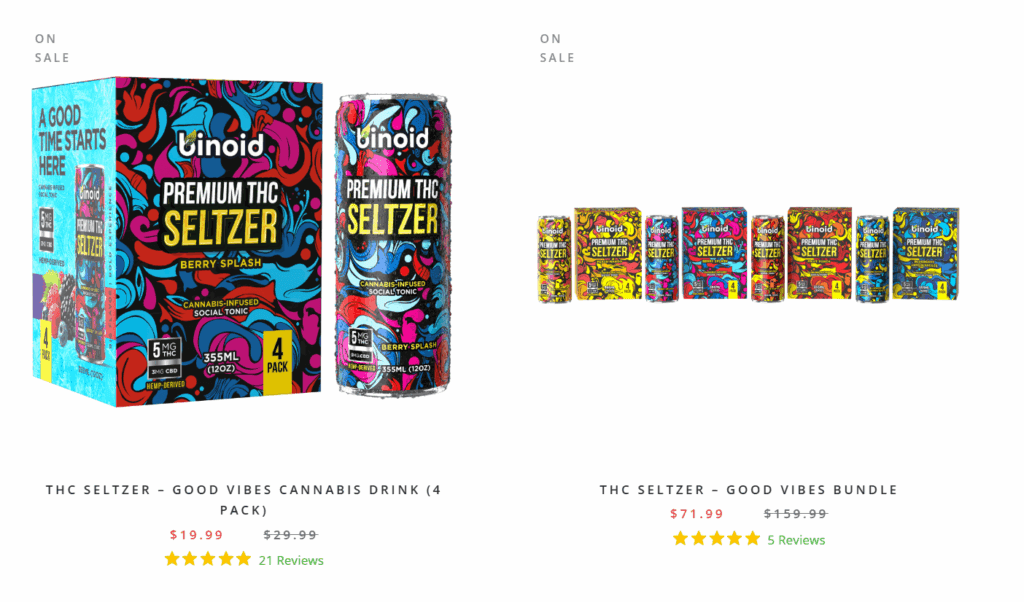
Contender #2: Pre-Packaged Drinks & Beverages
Emerging as the newest and perhaps most sophisticated frontier in the world of wellness consumables, pre-packaged drinks and beverages offer a refreshingly modern and socially integrated way to enjoy a wide array of active ingredients. This category represents a significant evolution in the edibles space, moving beyond solid foods to liquid formulations that prioritize hydration, rapid absorption, and unparalleled convenience. From sparkling seltzers and craft sodas to calming teas and complex mocktails, infused beverages are designed to fit seamlessly into the rhythm of everyday life.
They are at the forefront of the “sober curious” movement and the cultural shift from simple intoxication to the nuanced art of “mood curation.” Leveraging advanced food science technology, these drinks solve the age-old problem of mixing oil-based compounds with water, resulting in a product that is not only delicious and refreshing but also remarkably consistent and predictable in its effects, making them the perfect tool for the modern, mindful consumer.
Pre-packaged drinks and beverages are, at their core, ready-to-drink (RTD) liquid formulations that have been infused with precisely measured doses of specific wellness ingredients. This broad category encompasses an enormous range of products, positioning them alongside other popular RTD staples like hard seltzers, canned cocktails, and kombuchas in the modern consumer’s refrigerator. Unlike powdered mixes that require preparation, these products are sold in their final, consumable form in cans or bottles, offering the highest level of convenience.
They can be broadly categorized into full-volume “beverages” designed for sipping and refreshment, and smaller, highly concentrated “shots” or “elixirs” designed for a rapid, potent effect. The liquid format is the key to their unique properties; it allows for the use of technologies that can lead to faster absorption than solid edibles and provides a perfect vehicle for a wide array of complex flavor profiles. The focus is on creating a holistic experience that combines the functional benefits of the active ingredient with the fundamental pleasure and social normalcy of enjoying a drink.
The creation of a high-quality, shelf-stable, and effective infused beverage is a complex process that takes place at the intersection of beverage manufacturing and pharmaceutical science. It requires specialized equipment and a deep understanding of liquid dynamics, solubility, and preservation techniques to ensure that every can or bottle delivers a consistent, safe, and enjoyable experience. The journey from raw ingredients to a finished, ready-to-drink product involves several critical and technologically advanced steps:
-
Water Profile and Preparation: The process begins with the very foundation of the beverage: water. This water undergoes extensive treatment, not just filtration to remove impurities, but often deaeration to remove dissolved oxygen (which can degrade flavor and active ingredients) and sometimes re-mineralization, where specific minerals are added back to create a desired “water profile” that enhances the overall taste and mouthfeel.
-
The Science of Solubility: Active Ingredient Emulsification: This is the most critical and technologically advanced step. Most key wellness ingredients, particularly cannabinoids like Delta 8 THC, are lipophilic (oil-based) and thus hydrophobic (do not mix with water). To overcome this, manufacturers employ a process called Nanoemulsion. Using high-power sonic waves or high-pressure homogenizers, they shatter the cannabinoid oil into microscopic droplets (the “dispersed phase”), which are then encapsulated with a food-grade surfactant or emulsifier (like lecithin or polysorbate). This creates a stable emulsion that allows the tiny oil droplets to be evenly dispersed throughout the water (the “continuous phase”), resulting in a clear, non-oily liquid that is also more readily bioavailable to the body.
-
Flavor Science and Formulation: Once the water-soluble emulsion is created, the beverage’s unique flavor profile is developed. This is a scientific art form, often involving “flavor houses” that design complex blends of natural and artificial flavors. Beverage scientists work to perfect the delicate balance of sweetness (from sugar, stevia, etc.), acidity (using citric or malic acid to achieve a target pH level), and any inherent bitterness from the active ingredients to create a delicious and harmonious final product.
-
Large-Scale Infusion and Homogenization: The precisely measured nanoemulsion is then blended into the large, multi-gallon batch of the flavored base liquid. To guarantee perfect consistency from the first can to the last, the entire batch is then subjected to another round of homogenization. This process ensures that the active ingredient is perfectly and evenly distributed, eliminating any possibility of inconsistent dosing within the batch.
-
Carbonation and Finishing Touches: For sparkling beverages, the finished, chilled liquid is passed through a carbonator, which injects pressurized carbon dioxide to create the desired level of fizziness. Specialty drinks, like nitro cold brew coffee, are infused with nitrogen gas instead, which creates smaller bubbles and a distinctively smooth, creamy texture.
-
Ensuring Shelf Stability: Pasteurization and Preservation: To ensure the beverage is safe and shelf-stable, it typically undergoes pasteurization, a process of briefly heating the liquid to eliminate any potential pathogens. This can be done via tunnel pasteurization (heating the filled cans) or flash pasteurization (heating the liquid before canning). Additionally, food-grade preservatives like potassium sorbate or natural alternatives like citric acid are often used to inhibit microbial growth and maintain quality over time.
-
Packaging: Canning or Bottling: The final, finished beverage is then sent to a high-speed, automated packaging line. The cans or bottles are often purged with nitrogen gas to remove any oxygen before being filled with the liquid and immediately sealed and capped. This crucial step prevents oxidation, which can ruin the flavor and degrade the active ingredients. The containers are then labeled with all necessary regulatory, ingredient, and dosage information before being packaged for distribution.
The sheer diversity within the infused drinks and beverages category is one of its most exciting aspects. The liquid format is an incredibly versatile canvas, allowing for a vast range of products that cater to nearly every imaginable taste preference, dietary need, and social occasion. This has led to an explosion of creativity in the market, with brands launching everything from simple, health-focused waters to complex, cocktail-inspired creations:
-
Seltzers: Riding the wave of the hard seltzer boom, infused seltzers have become one of the most popular formats. They are the minimalist’s choice, typically featuring zero calories and zero sugar, and offering a light, crisp, and highly refreshing experience. The gentle carbonation and subtle hints of natural fruit flavors like lime, grapefruit, or black cherry make them a perfect, guilt-free canvas for active ingredients and an easy entry point for new consumers.
-
Sodas: For those with a more traditional and nostalgic palate, infused craft sodas offer a comforting and flavorful experience. Brands are reimagining classic soda fountain flavors like cola, root beer, orange cream, and ginger ale, but with a modern, functional twist. These products combine the familiar comfort of a sweet, fizzy soda with the novel effects of cannabinoids or adaptogens, offering a playful and indulgent treat.
-
Waters: At the simplest and healthiest end of the spectrum, infused waters focus on the core benefit of hydration. These can be found in both still and sparkling varieties and are often enhanced with just a hint of natural botanical or fruit essence, like cucumber mint or lemon ginger. They appeal directly to the health-conscious consumer who wants the functional benefits of an active ingredient without any added sugars, calories, or artificial flavors.
-
Lemonade & Tea: These classic, universally beloved beverages are perfect vehicles for infusion due to their strong, pleasant flavor profiles. Infused lemonades can be sweet, tart, and incredibly refreshing on a hot day. Infused teas, available in varieties like calming chamomile, classic black tea, or antioxidant-rich green tea, offer a more nuanced and traditional experience. Both are familiar, highly accessible, and excellent at masking any undesirable flavors from the botanical extracts.
-
Coffee: This innovative category combines the world’s most popular stimulant with other functional ingredients to create a unique “stacked” effect. Infused coffee is typically sold as shelf-stable canned cold brews or nitro cold brews. These products often pair the natural energy of caffeine with the balancing properties of CBD to create a “calm focus” state, or they may be infused with cognitive-supporting functional mushrooms like Lion’s Mane to enhance the mental clarity of the coffee experience.
-
Mocktails: Designed for the sophisticated palate and the modern socialite, infused mocktails are complex, non-alcoholic beverages crafted to replicate the experience of a high-end cocktail. They are not simple juice mixers; they often feature layered and nuanced flavors from botanical extracts, artisanal bitters, complex syrups (shrubs), and citrus oils. Infused with ingredients like Delta 8 THC or calming adaptogens, they provide a relaxing, social buzz without the alcohol, making them perfect for a refined evening.
-
Non-Alcoholic Drinks: This broader category includes the emerging and exciting products of infused non-alcoholic beers and dealcoholized wines. These beverages undergo the full fermentation process to develop their characteristic flavors, after which the alcohol is gently removed. The infusion of cannabinoids or other botanicals then adds back the “social ritual” and relaxing component, making them an ideal one-to-one replacement for their alcoholic counterparts.
A significant portion of the wellness beverage market is dedicated to products fortified with essential vitamins and minerals. These drinks are designed to support overall health and hydration, leveraging the convenience of a ready-to-drink format to help consumers meet their daily nutritional needs. They are often marketed as a healthier alternative to sugary sodas and fruit juices, providing functional benefits beyond simple thirst-quenching.
This category includes a wide range of “vitamin waters,” which are typically non-carbonated and come in various fruit flavors, each fortified with a specific blend of vitamins like C, B3, B5, B6, and B12, along with antioxidants. Another popular segment is electrolyte-enhanced beverages. These are formulated to aid in hydration by replenishing the key minerals—such as sodium, potassium, and magnesium—that are lost through sweat during exercise or on a hot day. They are popular among athletes and active individuals but are also beneficial for everyday hydration and wellness.
The largest and most dynamic sector of the infused beverage market is unquestionably those containing hemp-derived cannabinoids. These drinks have revolutionized the way people consume cannabinoids, offering a method that is not only smoke-free but also socially acceptable and incredibly precise in its dosing. The key innovation that makes these beverages possible is Nanoemulsion technology, which creates a water-soluble form of cannabinoid oils that can be easily mixed into any liquid base.
This technology also increases the bioavailability of the cannabinoids, allowing for a faster onset of effects compared to traditional solid edibles. The range of cannabinoids featured in these drinks is vast, including non-intoxicating options like CBD for general wellness and balance, CBG for its soothing properties, and CBN for relaxation. The market also includes a wide variety of intoxicating options, such as Delta 8 THC for a milder euphoric experience and federally compliant Delta 9 THC for the classic, potent effects.
Kratom-infused beverages, often sold as concentrated “shots” or brewed teas, offer a convenient way to experience the unique, dose-dependent effects of this Southeast Asian botanical. The active compounds in Kratom, primarily Mitragynine, can produce stimulating and energizing effects at lower doses, making a Kratom shot a popular choice for a morning or mid-day boost.
At higher doses, the effects become more sedating and relaxing, making a brewed Kratom tea a common choice for winding down in the evening. The beverage format allows for easy consumption and relatively rapid absorption compared to raw powder, and different drinks are often formulated with specific Kratom strains (Red, Green, or White vein) to target a desired experience, from energetic to tranquil.
Kava, a traditional ceremonial root from the Pacific Islands, is renowned for its calming and sociability-promoting properties, making it a perfect fit for the beverage format. Kava-infused drinks are rapidly gaining popularity as a non-alcoholic alternative for social situations. The active compounds, kavalactones, are known to promote a sense of mental relaxation and ease without significant cognitive impairment, helping to reduce everyday tensions and encourage conversation. Packaged Kava drinks, from sparkling tonics to concentrated shots, provide a simple and palatable way to enjoy these effects, offering a “social buzz” that can be a welcome substitute for alcohol for those seeking to unwind and connect with others in a more mindful way.
A niche but fascinating category is beverages infused with extracts from the Amanita mushroom. It is critically important to distinguish these from psilocybin-containing “magic mushrooms.” Amanita beverages contain the compound muscimol (derived from the conversion of ibotenic acid in the mushroom) and provide a unique, legal psychoactive experience that is more dissociative, sedative, and dream-like. These drinks, often sold as small, potent elixirs or tonics, are designed for users seeking to explore altered states of consciousness. The effects can include a warped sense of time and perception, and due to their potency, they are intended to be consumed in small, carefully measured doses in a safe and comfortable environment.
Functional mushroom-infused beverages have exploded in popularity as part of the broader wellness and nootropics movement. These drinks are non-psychoactive and are designed to be consumed daily to support various aspects of health and cognitive function. Mushroom coffee is one of the most popular products, often featuring a blend of coffee with extracts like Lion’s Mane to support focus and memory, and Cordyceps to support energy and stamina. Other products include mushroom teas and wellness shots that might contain Reishi for its adaptogenic, relaxation-promoting properties, or Chaga and Turkey Tail for their high antioxidant content and immune-supportive benefits. These beverages offer a simple way to incorporate the power of these celebrated fungi into one’s daily routine.
The overall effects of pre-packaged drinks and beverages are defined by their unique place in the edibles spectrum. Thanks to the use of advanced nanoemulsion technology, which makes the active ingredients more bioavailable, the onset of effects from a liquid can be significantly faster than from a solid food product. While a traditional brownie might take an hour or more to kick in, the effects of an infused beverage can often be felt in as little as 15 to 30 minutes. However, this faster onset is often accompanied by a shorter overall duration compared to solid edibles. The experience from a drink might last for 2 to 4 hours, whereas a brownie’s effects could last for 6 hours or more. This creates a unique “experiential curve” that many find ideal—it’s faster acting and more predictable than a traditional edible, but longer-lasting and more body-focused than inhalation, offering a desirable middle ground for many users.
Pros & Cons
The rise of infused drinks and beverages offers a modern, convenient, and refreshing new way to engage with wellness ingredients, but this innovative format comes with its own specific set of advantages and trade-offs. Their strengths often lie in their speed, social adaptability, and precise dosing, while their weaknesses can relate to their duration, ingredients, and storage needs. A clear-eyed view of these pros and cons is essential for determining if this liquid option is the best choice for you.
Pros:
-
Faster Onset Than Traditional Edibles: Again, due to the use of Nanoemulsion technology which makes the active ingredients more bioavailable, infused beverages typically have a much faster onset time than solid edibles like gummies or baked goods. This quicker feedback, often within 15-30 minutes, reduces the long waiting period and makes for a more predictable and controllable experience.
-
Superb for Social Situations: Drinks are a natural part of almost any social gathering. An infused beverage allows a user to participate in the social ritual of drinking without any of the associated odor or paraphernalia of flower. It is an incredibly discreet and socially acceptable way to consume, fitting in perfectly at parties, concerts, or dinners.
-
An Excellent Alcohol Alternative: For a growing number of people who are “sober curious” or simply wish to reduce their alcohol intake, infused beverages offer a fantastic one-to-one replacement. They provide a sophisticated, adult beverage option that can produce a relaxing “buzz,” helping users to unwind and socialize without the negative effects associated with alcohol.
-
Refreshing, Hydrating, and Flavorful: Unlike many other consumption methods, infused drinks serve the dual purpose of delivering an active ingredient while also providing hydration. On a hot day or after physical activity, a chilled infused beverage can be incredibly refreshing. The vast array of available flavors, from seltzers to teas, makes for a genuinely enjoyable taste experience.
-
Extremely Precise and Consistent Dosing: Reputable infused beverages offer one of the most precise and reliable dosing methods available. Each can or bottle is formulated to contain an exact milligram amount of the active ingredient, which is homogenized throughout the liquid. This means the consumer knows exactly what they are getting in every serving, leading to a highly predictable and repeatable experience.
-
Low-Calorie and Sugar-Free Options Abound: The beverage market is highly attuned to modern dietary preferences. This means there is a huge variety of low-calorie, zero-calorie, and sugar-free options available, particularly in the seltzer and infused water categories. This makes them an ideal choice for health-conscious consumers who want to avoid the sugars and fats found in many solid edibles.
-
Ultimate Grab-and-Go Convenience: Pre-packaged drinks require absolutely no preparation. They are the epitome of a “ready-to-drink” (RTD) product. This effortless convenience is perfect for a busy, on-the-go lifestyle, allowing users to simply grab a can from the fridge and enjoy it wherever they are.
-
Pairs Naturally with Food: Just like a traditional beverage, infused drinks can be enjoyed alongside a meal. A cannabis-infused lemonade can complement a summer barbecue, or a CBD-infused sparkling water can be enjoyed with dinner. This allows the experience to be integrated naturally into culinary routines in a way that is less common for other formats.
-
No Inhalation Required: For the large segment of the population that wishes to avoid smoking or vaping due to respiratory health concerns or personal preference, beverages offer a perfect solution. They are a completely smoke-free and lung-friendly way to enjoy the benefits of various botanical ingredients.
-
A Less Intense, More “Sessionable” Experience: Because the duration of effects from a drink is often shorter than from a solid edible, many users find the experience to be less intense and more manageable or “sessionable.” This means one might be able to have a second drink later in the evening, similar to how one might consume alcoholic beverages, offering more control over the arc of a social event.
Cons:
-
Shorter Duration Than Solid Edibles: The trade-off for a faster onset is often a shorter overall duration of effects. While a brownie might provide a 6+ hour experience, the effects from a drink may only last 2-4 hours. For users seeking a long-lasting, single-dose experience to carry them through a full day or night, this can be a significant disadvantage.
-
Can Contain Sugars or Artificial Sweeteners: While many healthy options exist, a large portion of the infused beverage market, particularly sodas and juices, can be high in sugar, high-fructose corn syrup, or artificial sweeteners. Consumers must be diligent in reading labels to ensure the product aligns with their dietary goals and avoid unwanted additives.
-
Less Shelf-Stable Once Opened: Unlike a bag of flower or a container of gummies, once a carbonated beverage is opened, it must be consumed relatively quickly before it goes flat. This means the user is generally committed to consuming the full dose in one session, offering less flexibility than a product that can be easily resealed and saved for later.
-
Potential for a “Weedy” Aftertaste: While flavor technology has improved dramatically, the Nanoemulsions used to make cannabinoids water-soluble can sometimes impart a slightly bitter or “weedy” aftertaste to the beverage. Some consumers are more sensitive to this than others, and it can detract from the overall taste experience in some products.
-
Risk of Overconsumption Due to “Drinkability”: Because these beverages are often refreshing and delicious, there can be a temptation to drink them too quickly or to have more than one in a short period, just as one might with a regular soda. This can lead to “dose stacking,” where a user accidentally consumes a much higher dose than intended, resulting in an uncomfortably intense experience.
How to Go About Choosing Which Option
Navigating the choice between the enhanced ritual of Delta 8 THC flower and the fluid refreshment of a wellness-intended beverage is not about finding a definitive winner, but about an act of personal alignment. It is a decision that asks you to consider your own rhythm, social habits, and desired experience, ultimately choosing the form that best resonates with your lifestyle. Are you drawn to the dry, elemental ritual of flower, an experience defined by breath and immediacy? Or do you prefer the fluid refreshment of a modern beverage, an experience that flows seamlessly into social situations? By honestly evaluating your priorities, you can move beyond a simple product choice and consciously curate a moment of wellness that feels perfectly suited to you.
To bring this decision into sharper focus, it is helpful to weigh your preferences across several key differentiating factors. By considering where you stand on each of these points, a clear choice will likely emerge:
-
The Experiential Timeline (Onset and Duration): This is the most critical distinction. Are you seeking an experience with an immediate onset and a shorter duration, perfect for a quick transition into relaxation after work? If so, the near-instantaneous effects and 1-3 hour duration of inhaled Delta 8 flower is your answer. Or, do you prefer a faster-acting edible experience without the long wait of a brownie, one that kicks in within 30 minutes and lasts for a few hours? If this “middle ground” of speed and duration sounds appealing, the unique experiential curve of an infused beverage is the ideal fit.
-
Social Context (The Private vs. The Public): Consider where you plan to enjoy this product. Is it for a quiet evening at home, where you can engage in the private, hands-on ritual of preparing flower without any concern for odor or appearance? In that case, flower is a wonderful choice. Or, is it for a social gathering—a party, a barbecue, a concert—where discretion and the ability to blend in are paramount? The unparalleled social acceptability of holding a canned beverage makes it the undeniable champion for public or group settings.
-
Dosing Style and Philosophy: How do you prefer to control your intake? Do you enjoy the tactile, in-the-moment control of titration, taking one puff at a time and gauging the effects as you go? This is the art of consuming flower. Or, do you value the scientific precision and predictability of a clearly labeled dose? The “what you see is what you get” nature of a beverage that explicitly states “10mg” on the can offers a level of consistency and peace of mind that many users prefer.
-
Flavor and a Matter of Palate: What kind of taste experience are you looking for? If you are a botanical enthusiast who appreciates the complex, earthy, citrusy, and piney notes of different hemp strains, then the terpene-rich flavor of vaped or smoked flower is a primary part of the appeal. If, however, you find those flavors to be unappealing and would much rather enjoy a crisp, refreshing fruit seltzer or a sweet, nostalgic soda, then the culinary-focused world of infused beverages will be far more enjoyable to your palate.
|
Feature |
Delta 8 THC Flower |
Pre-Packaged Drinks & Beverages |
|---|---|---|
|
Form |
Enhanced Solid (Infused Flower) |
Engineered Liquid |
|
Primary Method |
Inhalation (Smoking/Vaping) |
Ingestion (Drinking) |
|
Onset Time |
Very Fast (2-10 minutes) |
Fast for an Edible (15-45 minutes) |
|
Duration of Effects |
Shorter (1-3 hours) |
Medium (2-4 hours) |
|
Dosing Control |
Low precision (intuitive titration) |
Highly precise and consistent per can |
|
Social Context |
Low (private, requires gear, has odor) |
Highest (public, discreet, socially normal) |
|
Primary Purpose |
Ritual, botanical exploration, immediate effects |
Refreshment, social lubrication, convenient dosing |
|
Ingredients |
Two main parts (Hemp Flower + D8 Distillate) |
Liquid formulation (water, flavors, emulsifiers) |
|
Dietary Impact |
None (no calories or sugar) |
Varies (many low-calorie/zero-sugar options) |
|
Flavor Profile |
Natural, earthy, strain-dependent |
Culinary, refreshing, vast flavor variety |
|
Best For |
Users wanting fast effects, a clear-headed buzz, and the flower ritual |
Users wanting a social, refreshing, and fast-acting edible experience |
Finding Your Flow: From Aromatic Clouds to Refreshing Currents
In the final analysis, the decision between Delta 8 THC flower and an infused beverage is a choice between states of being, both literally and figuratively. One path offers an experience grounded in the solid state, a tangible, earthy ritual that transforms a plant into an aromatic cloud of breathable vapor. It is a deliberate, focused act of engagement with a botanical product, a process that is as much a part of the experience as the effect itself. The other path offers a journey through the liquid state, an experience defined by its fluidity, its social grace, and its ability to merge seamlessly into the flow of life. It integrates wellness into the fundamental act of hydration and refreshment.
Neither is inherently superior; they are simply different currents leading to a similar ocean of relaxation. The most rewarding choice is the one that best matches your personal flow, guiding you effortlessly to your desired state of blissful calm.
TO BUY DELTA 8 THC FLOWER CLICK HERE
Recommended products
-
THCA Flower – Indoor Exotics – Gold Line
$37.99$69.99 -
THCA Flower – Platinum Line
$49.99$79.99 -
THCA Flower – Mystery Reserve
$41.99$79.99 -
THCA Smalls
$149.99$256.99

